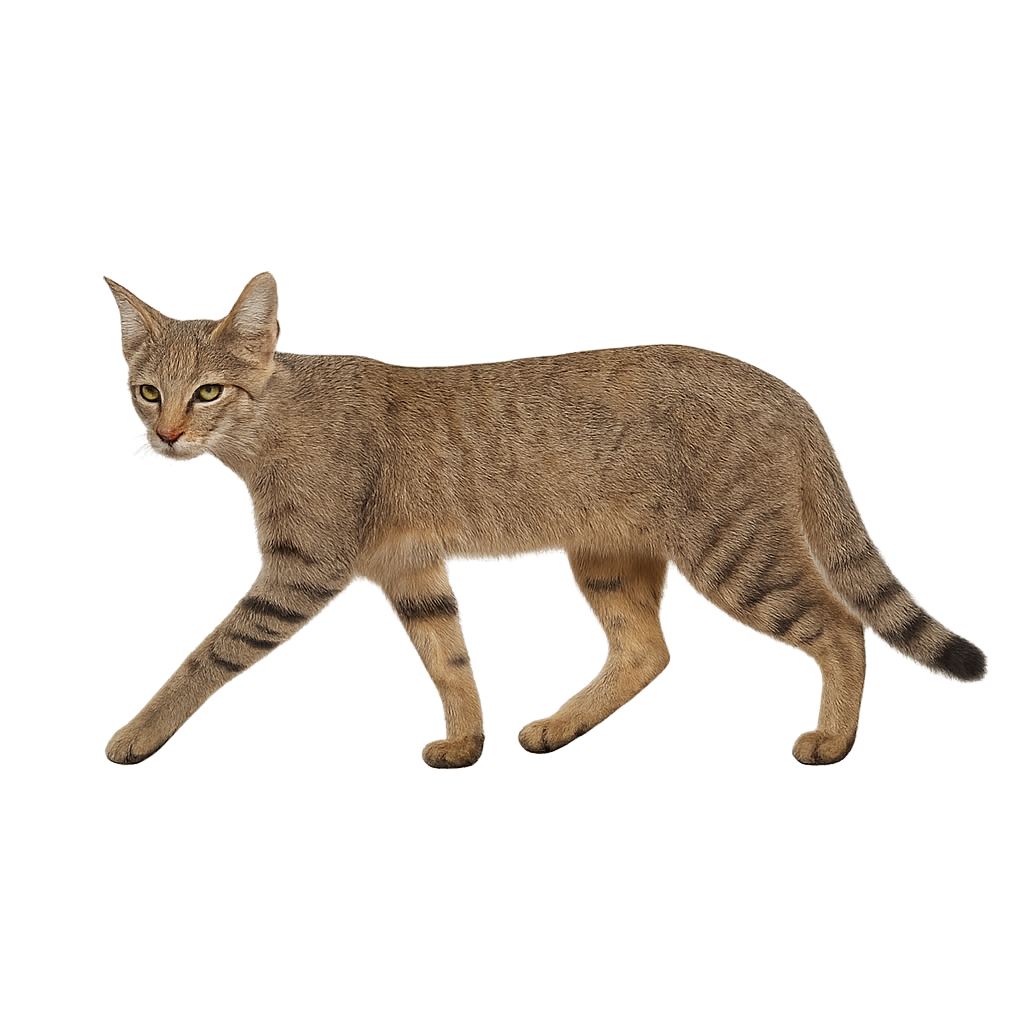Your wildlife photography guide.
Explore the african wildcat in detail, study its behavior, prepare your shots.
Where to observe and photograph the african wildcat in the wild
Learn where and when to spot the african wildcat in the wild, how to identify the species based on distinctive features, and what natural environments it inhabits. The WildlifePhotographer app offers tailored photography tips that reflect the african wildcat’s behavior, helping you capture better wildlife images. Explore the full species profile for key information including description, habitat, active periods, and approach techniques.
African Wildcat
Scientific name: Felis lybica

IUCN Status: Least Concern
Family: FELIDAE
Group: Mammals
Sensitivity to human approach: Suspicious
Minimum approach distance: 30 m
Rut period: January to March
Gestation: 56-65 jours
Births: February to June
Habitat:
Arid zones, savannas, and steppes
Activity period :
Mainly active at night, generally discreet during the day.
Identification and description:
The African Wildcat is a small, discreet, and nocturnal feline, primarily found in desert regions, savannas, and open forests of North and Sub-Saharan Africa. It is often compared to the domestic cat but has a more uniform coat, typically sandy or gray-brown, with light markings on the head and paws. Its eyes are large, adapted for nocturnal vision, and its ears are pointed, enhancing its wild appearance.
This cat is a solitary hunter, feeding mainly on small mammals, birds, and insects. Although shyer than its domestic cousin, it plays an essential role in regulating prey populations in its habitat. It is also known as the ancestor of the domestic cat, which was domesticated from this species around 10,000 years ago. While the African Wildcat is still relatively widespread, it is threatened by habitat loss and human conflict.
Recommended lens:
400 mm – adjust based on distance, desired framing (portrait or habitat), and approach conditions.
Photography tips:
Approach slowly and discreetly, using a telephoto lens, as the African wildcat is a shy animal and can quickly retreat if disturbed.
Photograph early in the morning or late in the afternoon, when the light is soft and the African wildcat is more active, often hunting for food or moving through bushy or rocky areas.
Capture moments of natural behavior: The African wildcat primarily hunts small mammals, birds, and insects. Wait for moments when it is actively hunting or foraging.
Be patient and respectful: The African wildcat is a discreet predator and can be hard to spot. Wait for it to become visible without disturbing its activities.
The African wildcat is a vulnerable species due to habitat loss and competition with domestic cats. It is essential to respect its natural environment and not disturb its natural behaviors. Follow local conservation rules to preserve this rare species.
The WildlifePhotographer App is coming soon!
Be the first to explore the best nature spots, track rutting seasons, log your observations, and observe more wildlife.
Already 1 450 wildlife lovers subscribed worldwide

